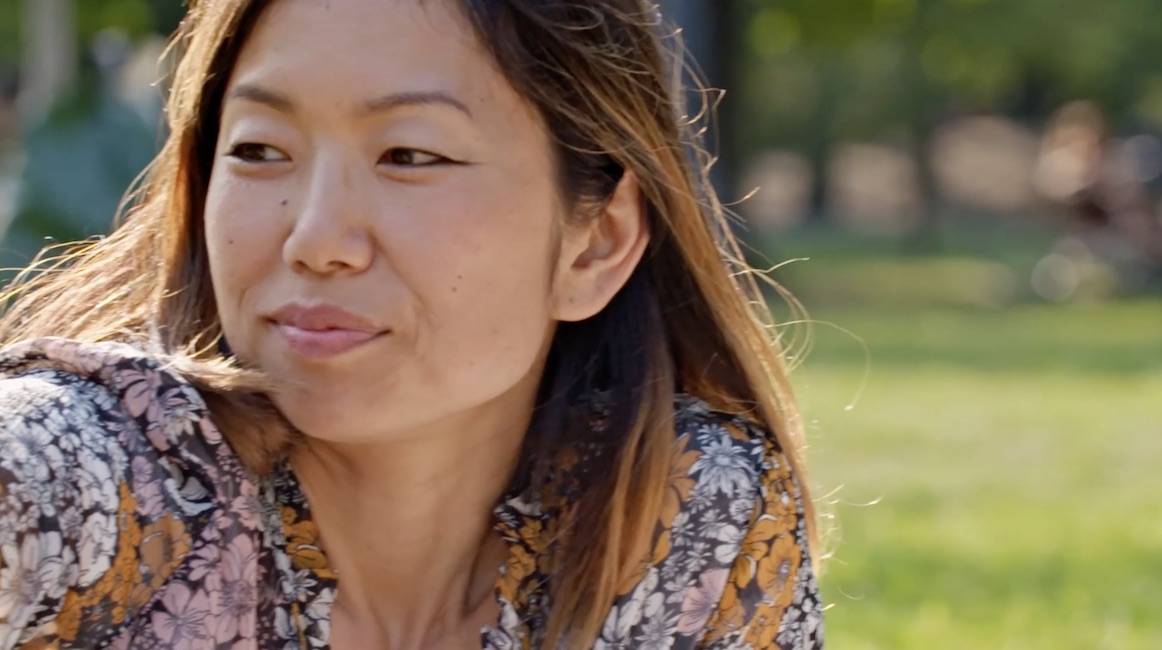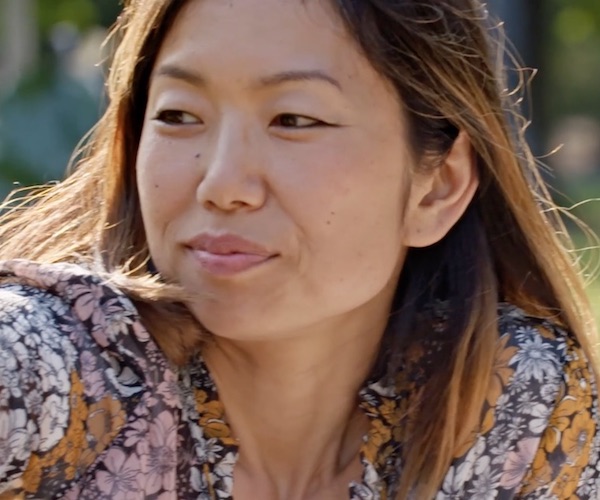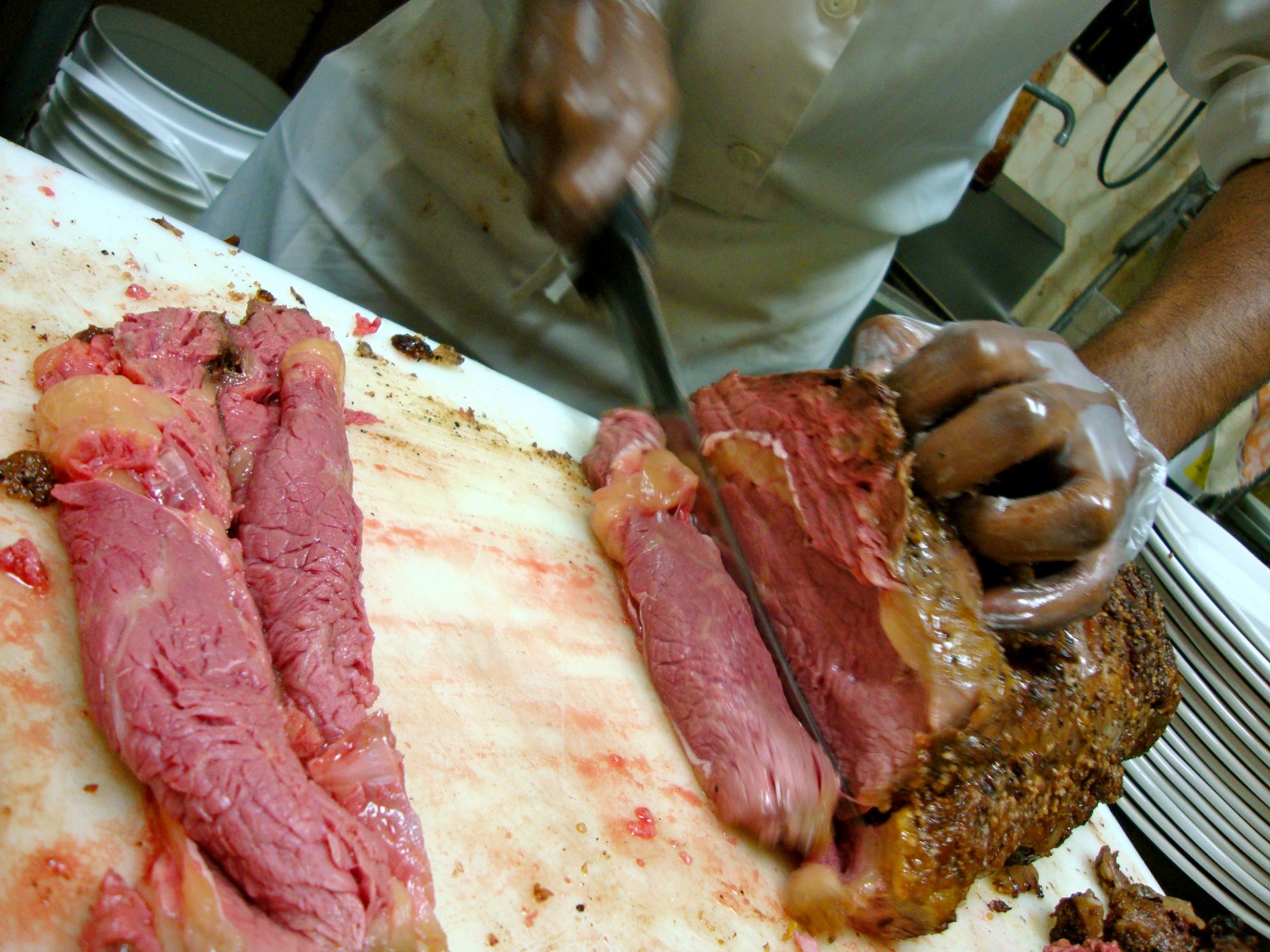Malcolm Jolley talks to Ann Shin, director of The Superfood Chain.

Toronto-based film director, author and journalist Ann Shin has a new documentary out, premiering this month at The Planet in Focus Environmental Film Festival and on TV Ontario. True to its name, The Superfood Chain, looks at the supply of a number of exotic foods that come with health claims and travels around the world to their source. There she meets the people who grow, hunt or gather each superfood and finds out how a sudden taste for their traditional food has affected their lives. The film is fascinating and beautifully shot (see the trailer below). I spoke to Ann Shin recently by phone to find out what interested her about superfoods and led her to make this remarkable documentary.
(Embedded videos will not appear in email posts. Please click here to see the video meant to be above at goodfoodrevolution.com.)
This interview has been edited for clarity, length and style.
Good Food Revolution: In my world, I get a lot pitches about ‘superfoods’, whether it’s a product, or a cookbook. Most of the attention I pay is on the health claims or what they taste like, but I’ve never really thought very much about where they were coming from or who grew them. What got your interest and made you decide to find out?
Ann Shin: I’ve got two daughters, who were seven and twelve at the time, and we’re always trying out new superfoods. And when we did try a superfood, my youngest was always like, “What is this, anyway and where does it come from?” I didn’t know how to answer her, so I would say something like, ‘Well, it’s got lots of antioxidants’, or whatever the usual nutritional hype that surrounds the all these new foods is. So to answer my daughter’s questions, I started looking into superfoods and where they’re from and I became really intrigued with some of the issues that come up with the sourcing, the sales and the marketing of superfoods. That took me to a bunch of different countries.
Good Food Revolution: It’s a very interesting mix of countries that makes, if I may say, for a really visually arresting film. It’s beautifully shot. The footage of the quinoa in Bolivia blew me away. I had no idea the plant was neon pink.
Ann Shin: Yeah, I know. Me too. It looks bit like sumac, I guess?
Good Food Revolution: Let’s get to the issues around superfoods that were were talking about. I think you show that the ‘discover’ of a superfood is often both a blessing and a curse, right? What happens when you’re poor Bolivian quinoa farmer and all of a sudden millions of North Americans want to have your crop in their lunch bowls every day.
Ann Shin: Quinoa is an ancient grain and a staple of lots of South American countries, but then North America cottoned onto it as superfood: as a grain that’s high in protein and has lots of different minerals. The demand went up so quickly that prices went through the roof. While the local Bolivian and Peruvian farmer benefited, the local communities couldn’t afford to eat it anymore because it was so expensive. So, ironically, Bolivians were feeding their kids pasta while health conscious North American moms are serving quinoa to their kids.
Good Food Revolution: That’s insane.
Ann Shin: Then, a few years later, the big factory farms of the agricultural industry in America and Canada caught-up and started growing quinoa. The supply met the demand, and once they’re matched the price comes down. This caused another adjustment for the Bolivian farmers and their communities. For instance, there were city dwellers from La Paz that had moved up to the highland country to take advantage of the cash crop. But when the prices came back down again, it wreaked havoc. It’s not a sustainable model.
Good Food Revolution: More so than your standard commodity, I guess? I believe there are all kinds of problems with going from small scale to bigger, industrial farming practices in the developing world anyway. But if you compound that with flaky North American food trends, where tastes for one superfood changes from year to year, it must be exponentially worse.
Ann Shin: For sure.
Good Food Revolution: Let’s look another superfood: coconuts. They largely come from the Philippines, I learned from your film. I’m not sure why but never really attached a place to coconuts.
Ann Shin: Coconuts are produced in a number of countries around the world, but the Philippines is a big producer of them. Coconut as a superfood became really popular when celebrities like Madonna started investing in coconut water companies. But also nutritionists, and the celebrities, started talking about the benefits of virgin coconut oil. It’s a good fat to cook with. I went to the Philippines to follow a small group of subsistence farmers who were finally able to sell product from their land because a Fair Trade organization came up with the money to buy some equipment for their processing plant so they could make virgin coconut oil. Without that additional step of processing, from the machine, the farmers couldn’t sell their coconuts. So, that’s an interesting example of how there are ways in which the superfood industry can help farmers when Fair Trade organizations help them out and they’re able to make some money from their crops.
Good Food Revolution: Another story in your film might be of particular interest to GFR readers is from here in Canada: the salmon fishers of the Haida Gwaii First Nation. How did your attention get turned to there?
Ann Shin: I like fish, and I want to keep fish in my diet and my kids’ diets. I have often eaten salmon, which is touted for having lots of Omega-3 oil, which is good for your heart and your brain function, among many other attributes. I realized that the demand for wild caught salmon, that is coveted by most of us, creates a definite impact on the communities that depend on it. So, I went to Haida Gwaii, which is an aboriginal community in BC. It’s a well run community where people have all kinds of jobs but also live off of the land. So, they might be teachers or engineers but they also catch fish or pick berries. I saw first had how the demand for the wild caught salmon has created a bit of a crunch. There’s a commercial fishery there, there’s a sport fishery because more and more people want to go there for sport fishing, and then there’s the Haida fisher, the aboriginal fishery. They’re all competing for an allotment. It made me realize that maybe you don’t have to always go for a pressured species. You don’t need to go to wild caught salmon alone to get your Omega-3’s. You can them from flax seeds, or from anchovies and sardines, which are much more sustainable. So, I learned that if one thing gets touted as a superfood, it’s probably not the only thing that has that nutrient. There are likely other sources that are just as good that more sustainable.
Good Food Revolution: It sounds like making The Superfood Chain hasn’t diminished your interest in superfoods. You’re not saying they’re more trouble than it’s worth?
Ann Shin: Making it did make me realize that there is a lot hype. If you eat local, whole, preferably organic food, that is not processed, you’re likely getting all the nutrients the body needs to live healthily and long. So, superfoods aren’t a magic bullet, and I see that there are valuable alternative to superfoods that can be sourced locally. Still, each superfood has different strengths and benefits, so if you do need, for whatever reason, a particular benefit that is most concentrated in a specific superfood, I say go for it. I’m not against superfoods, per se. I would say, I am much more pro local and organic food and/or foods that are sourced through Fair Trade organizations. And I always try and buy Fair Trade for something that is marketed as a superfood.
Good Food Revolution: I think that’s pretty close to where most ‘mindful’ food consumers are at. I mean, if you live in Canada it’s pretty hard to avoid imported foods, for at least some of the year.
Ann Shin: For sure. You know, it was really heartening to go to these farms around the world and live with these people for a bit. My daughters came with me, and we became much more connected with food. For most of us, something like quinoa or açai is a package we get at a store. But to see how and where its grown, and how it’s part of a people’s diet and their traditions and culture is powerful. In Bolivia, my friend would process the grain by wetting it and crushing it with her foot on a plastic sack in the middle of her urban courtyard. They make different things with it. One thing was kind of like an arancini ball, and they would take a bundle of them for lunch, because it’s easy to eat and pack it that way. So, it was neat to see how quinoa is just part of their lives and some kind of powdered superfood that I need to plop into my routine somehow. These are foods with traditions that make sense and fit into those cultures. So, you can adopt some of those traditions into your kitchen here, or go with local foods and your own.
Ann Shin’s The Superfood Chain will be screened at the Review Cinema in Toronto on Sunday, Ocotber 28 as part of the Planet in Focus film festival. The documentary has its own website at thesuperfoodchain.com.







